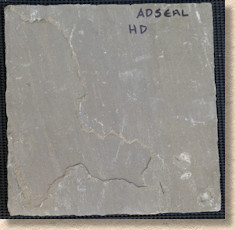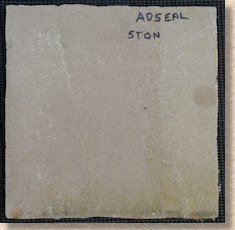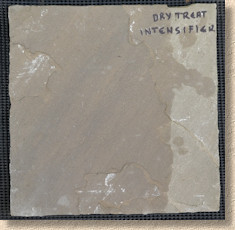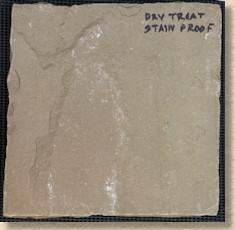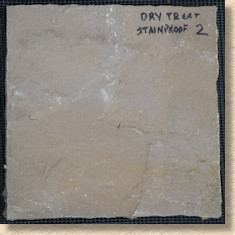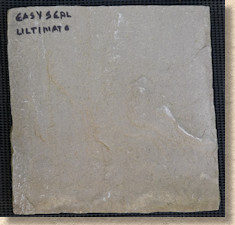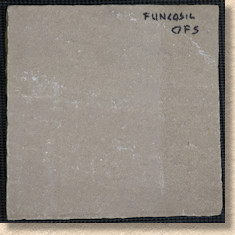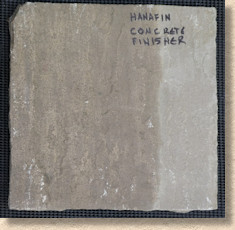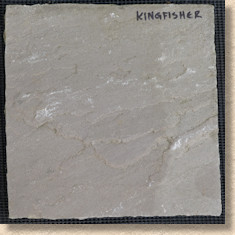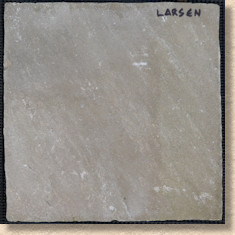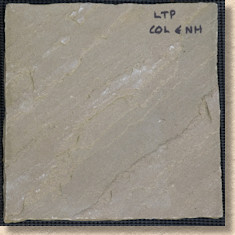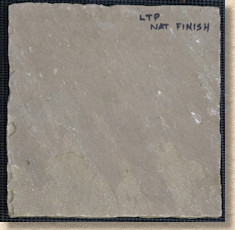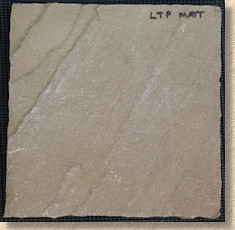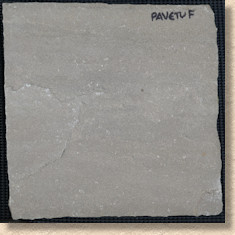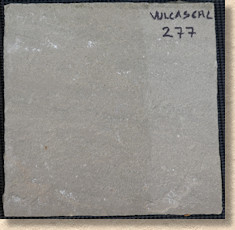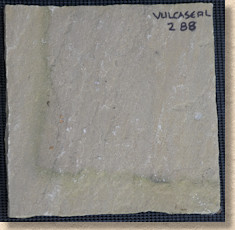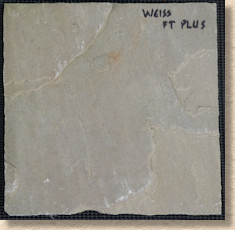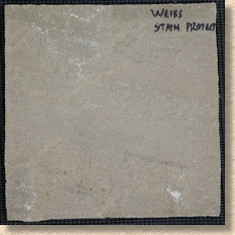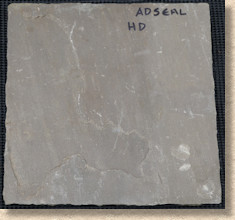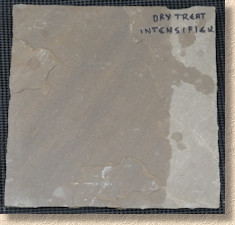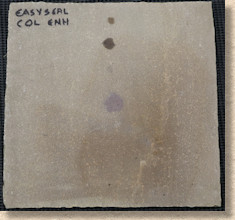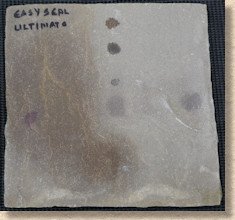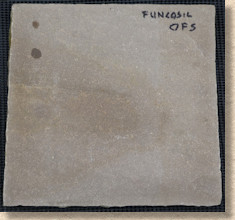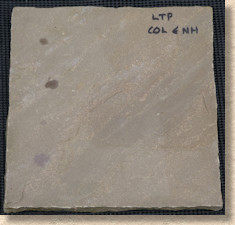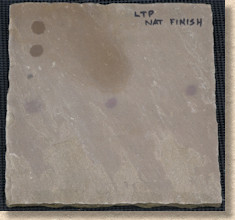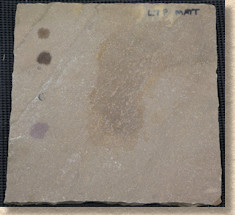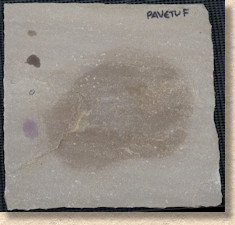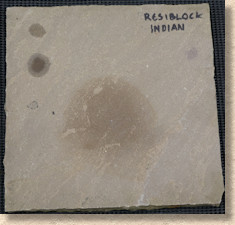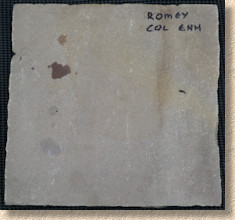Introduction:
Some years ago, a series of trials using sealants and colour enhancers to protect and/or revitalise the dreaded Black Limestone was undertaken and since it was first published it has become one of the more popular pages on the website. So popular, in fact, that it regularly prompts questions about what sealant (or colour enhancer) would be best for sandstone/granite/yellow limestone/etc.
A separate page on the website has attempted to explain why it’s impossible to give a firm and confident answer to that question. There is no single best sealant/colour enhancer for any particular type of stone. There are too many variables to be considered.
It is possible to draw up a sort of shortlist of ‘usual suspects’, the sealants (I'm going to use this term to now include the colour enhancers) which, time after time after time, tend to be chosen by experienced contractors and canny distributors, but, even the best of these will tell you that it really is a case of ‘horses for courses’ and they, too, will tend to choose a different product for different materials in different circumstances.
The Plan:
In a crude attempt to provide some guidance to users, whether they are contractors, DIYers or just interested parties, it was decided to try out a fairly wide range of popular sealants that are reasonably readily available.
In an ideal world, it would have been best to try them all on a range of substrates, but limitations of space and time meant that it was only possible to trial a single stone type, so the most popular choice for British and Irish homeowners, an Indian sandstone, was selected.
The lovely people at Landscape World in Widnes = provided an overwhelmingly generous stack of 300x300mm pieces of an ‘Autumn Brown’ riven sandstone. This is a fairly dense and better-than-average imported sandstone that’s popular throughout the nations. It’s a good choice for homeowners; it’s nowhere near as soft as Rainbow and it doesn’t turn green with algae overnight, as is often the case with Fossil Mint. Maybe it’s not quite as hard as Raj Green or Kandla Grey, but it’s more than adequate for typical British and Irish climatic conditions.
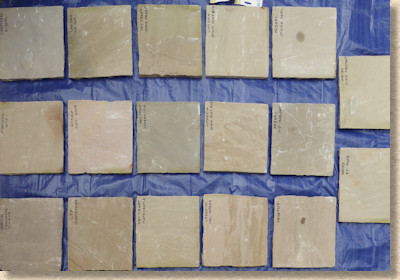
Next, a public appeal was made to sealant manufacturers and distributors via Twitter and The Brew Cabin discussion forum, as well as direct appeals via email and telephone calls.
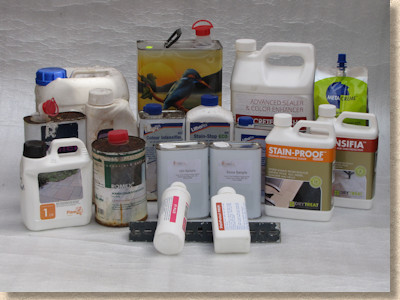
Small samples were requested for the trial and, thankfully, most of the recognised brands responded, some with 100ml vials, just enough to undertake the trial, others with multiple full packs, perhaps hoping their generosity would influence the results. It wouldn’t. It couldn’t, as will be seen, but even if it could, it wouldn’t because that’s simply not the pavingexpert way.
The Sealants:
The full list of candidate sealants is given below......
* - two samples of Dry Treat Stain Proof were prepared because it was suspected the first attempt may have become contaminated
The Result page opens a 'pop-up' page showing a large image of the sample piece as it appeared after 14 months.
The Report page shows all of the stage photos taken during the trial for each sample and details any specific considerations
The Treatment:
On one of the rare good days at the start of July 2015, each sealant was applied to a single piece of sandstone. For each application, a new, unused synthetic lambswool roller was used to apply the relevant sealant, with the roller being discarded after use and a new one fitted before moving on to the next sealant.
Roughly two-thirds of the flagstone was coated with a single application of the sealant and set aside to cure. Then, in accordance with the manufacturer’s guidance, at the specified point in the curing cycle, a second coat was applied over the already coated section.
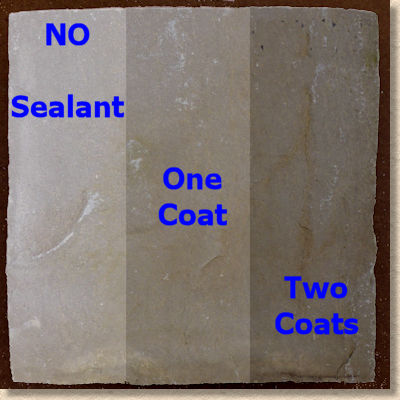
Some products recommend a second coat, while others state that a single coat should be adequate. ALL of the samples, whether they liked it or not, were given two coats and, as is documented in the individual reports, some of the sealants all-but-refused to accept a second coat, but at least it was tried!
As each sample was applied to the substrate flagstones, notes were made regarding the viscosity, odour, ease of application, coverage and anything else considered relevant. The notes for each individual sample are given on the respective report pages, accesible via the list above.

Once all of the pieces had been coated, they were placed onto the ‘ Environmental Exposure Rack ’* where they would endure a full season at the mercy of whatever the British climate in the north-west of England could throw at it.
* Roof of bike storage shed
And so they all spent the late summer of 2015 open to the elements, a winter where the tannin-rich leaves from a big oak tree swathed them, followed by a couple of harsh frosts, a wet spell when it seemed it would never dry up.
Intermediate photographs were taken in March of 2016, ten months after initial application of the sealants, and just after the worst of the winter was judged to have passed. These intermediate photographs are published on the individual report pages, accessible via the candidate list above.
There followed a baking hot spell in late May/early June of 2016, and a lazy lapse into the summer, when the final ‘result’ photographs were taken in early September, prior to the Stain Testing trials.
During their year-long sojourn, the flagstones were, occasionally, repositioned on the ‘ Environmental Exposure Rack ’, so that no single piece could be said to have had a more favourable or sheltered spot.
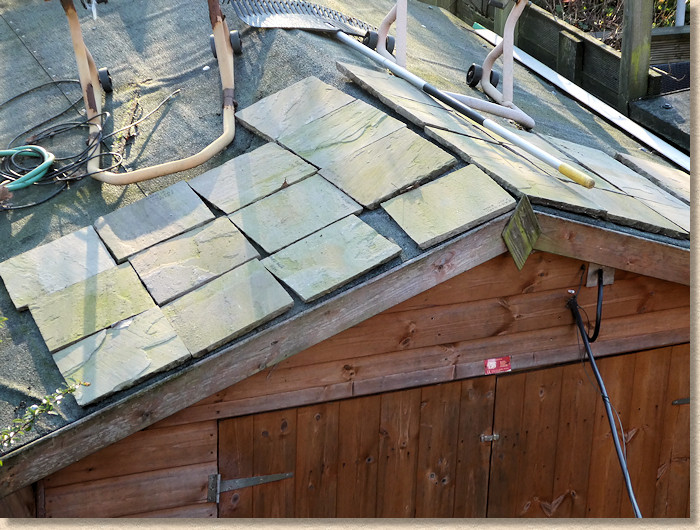
Initial Results:
The condition of the sample pieces of flagstone as of Summer 2016 is what we'll refer to as the "Initial Results". There are further results but these refer to the outcome of the stain testing sequence, which is dealt with further down the page.
It was never the intention of this trial to present a single product and declare it to be ‘The Winner’. There can’t be a winner, because there’s no universally agreed definition of what is required from a sealant to make it a winner. Some users will want a gloss look; others will want a sealant to be undetectable. For some, stain prevention will be paramount; for others, they will be more concerned with perceived colour enhancement.
Accordingly, photographs of all the sample pieces were taken in early September 2016 (Sept 7th, if you really want to know!) and are published below as small swatch-like photies to allow easy comparison. The bigger, individual images are provided on the reports pages with the intention of potential users being at liberty to choose what they believe to be the product which best meets their own particular requirements. In other words: You Choose!
Results after 14 months (September 2016)
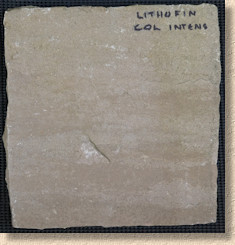
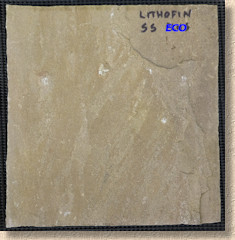
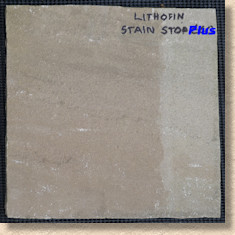
Stain Testing
For many users, the visual impact or ‘visual enhancement’, as discussed above , of a sealant is all that matters. Does it improve the look of the stone?
For some users, however, they want more. They want the paving to be protected from accidental stains, or they need it to be made almost ‘algae proof’ so that it doesn’t turn green in the cool, perma-damp of a British or Irish climate.
So, the second stage of the Sealant Trials looked at how well each candidate performed when ‘accidentally’ contaminated with a range of common stains, aimed at replicating what might happen with a fairly typical residential patio or driveway.
So, in September of 2016, after all of the subject pieces were photographed for the final time in their hopefully pristine condition, they were lined up for this final stage of the trials.
Each flagstone was daubed with a range of common contaminants. These were as follows:
- A single drop of used engine oil
- A single drop of warm barbecue fat(burger/sausage)
- A single drop of Indian ink
- A single drop of red wine(cheap supermarket plonk)
- A quarter teaspoon of ferrous sulphate mosskiller
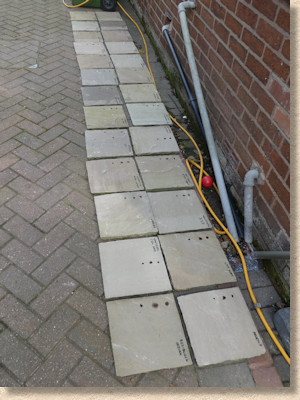
Each stained sample stone was left for 24 hours, then rinsed off with clean, cold water, before being allowed to dry off naturally in the late September sunshine.
A couple of days later, each sample piece of stone was scrubbed clean using Weiss Grundreiniger , a general purpose pavement cleaner, and then power-washed with a typical domestic grade pressure washer (Karcher K3.99) using the lance attachment (turbo nozzle) rather than the rotary head cleaner attachment.
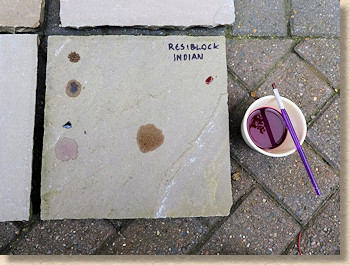
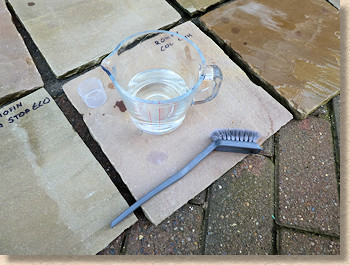
The sample pieces were allowed to dry overnight and then photographed.
Once again, the photographs are presented below so you can judge for yourselves. Comments on the impact of the stains is contained within the individual report pages relevant to each individual product.
Stain Test Results (September 2016)
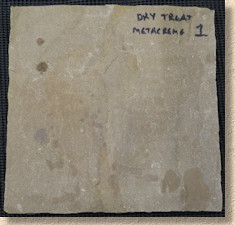

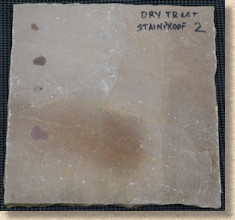
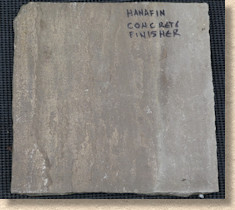
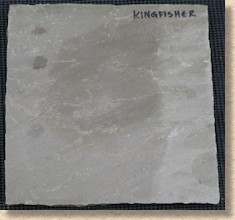
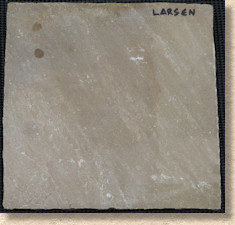
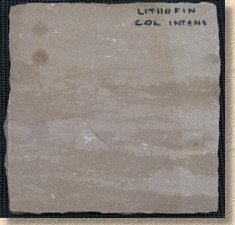
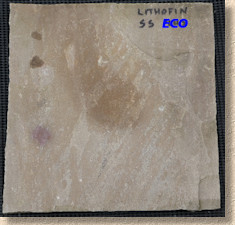

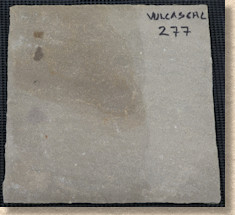
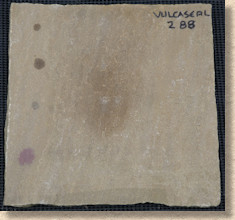
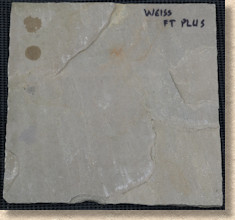
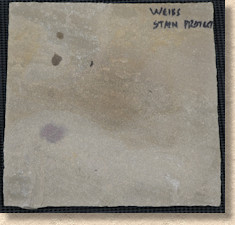
Interpreting the results:
It was never the intention of this trial to present a single product and declare it to be ‘The Winner’. There can’t be a winner, because there’s no universally agreed definition of what is required from a sealant to make it a winner. Some users will want a gloss look; others will want a sealant to be undetectable. For some, stain prevention will be paramount; for others, they will be more concerned with perceived colour enhancement.
Accordingly, photographs of all the pieces were taken and are published on this page with the intention of potential users being at liberty to choose what they believe to be the product which best meets their own particular requirements. In other words: You Choose!
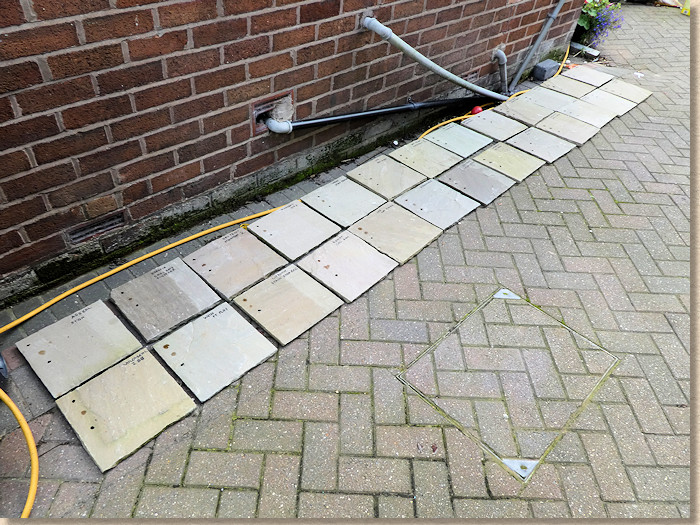
Stain testing in progress
Naturally, it’s not easy to extrapolate the results from a single 300mm flagstone to an entire patio, driveway, courtyard of terrace, but to trial each product on a ‘real’ patio, even a smallish one of just, say, 10m², would be impractical.
It should also be pointed out that the sample pieces haven’t been trafficked, as would most likely be the case with a ‘real’ installation, so there has been little of the type of abrasion that would be expected with a patio or driveway. This is significant, particularly for the topical sealants. Some might abrade with relative ease while others remain virtually unaffected, and this would, of course, impact on the performance.
So: over to you. Hoopefully, all this in-depth research will help identify the most appropriate sealant or colour enhancer for your project. Please let me know how it goes - feedback from users is immensely important and will help guide the development of further trials in years to come.

